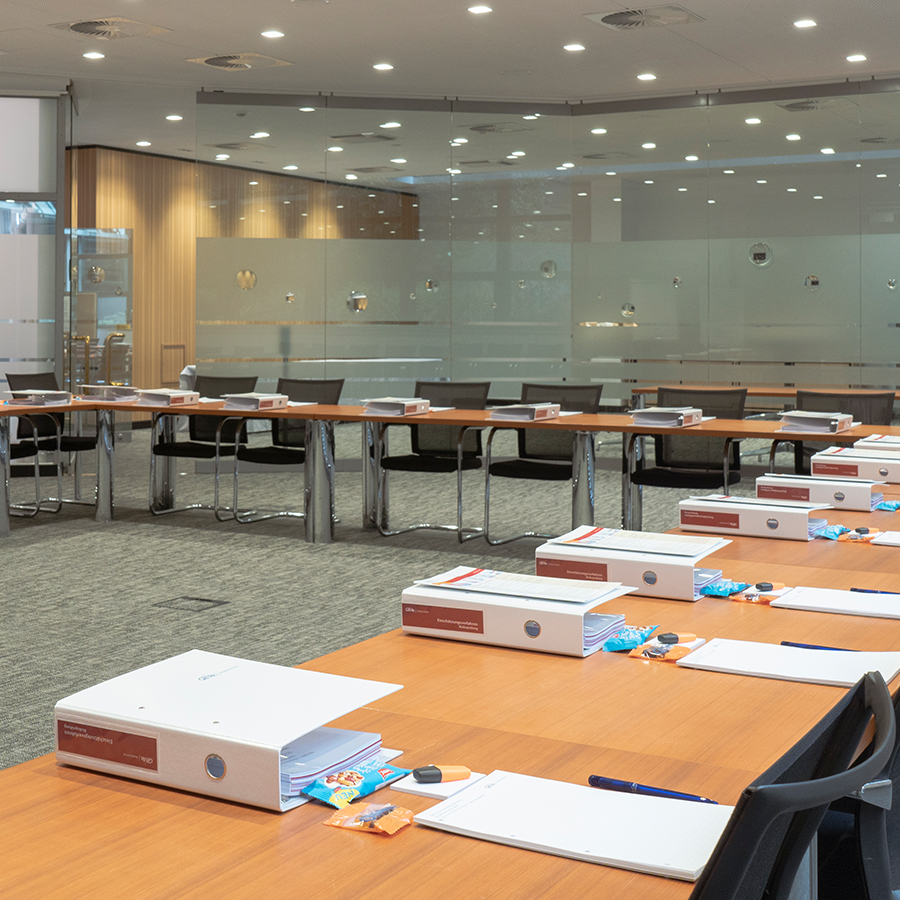-
Property & Casualty
Property & Casualty Overview

Property & Casualty
We offer a full range of reinsurance products and the expertise of our talented reinsurance team.
Trending Topics
Publication
Recycling of Large Lithium-Ion Batteries From a Property Insurance Perspective
Publication
Looks Like Inflation Is Sticking Around. What Do We Do Now? [Part 3 of 3]
Publication
The Future of Cryptography and the Rise of Quantum Computing
Publication
Personal Injury Compensation in Europe: An Updated Comparison Among Different Systems Within the European Market
Publication
How to Plan for Cat Claims - Before, During, and After an Event -
Life & Health
Life & Health Overview

Life & Health
We offer a full range of reinsurance products and the expertise of our talented reinsurance team.
Training & Education
Publication
The Future Impacts on Mortality [Video]
Publication
Beware of Demo Mode on Electrocardiogram Reports
Publication
Understanding Breast Cancer in Asia – Awareness and the Importance of Screening
Publication
Marginal Gains in the Medicare Supplement Market U.S. Industry Events
U.S. Industry Events Moving The Dial On Mental Health
Moving The Dial On Mental Health -
Knowledge Center
Knowledge Center Overview

Knowledge Center
Our global experts share their insights on insurance industry topics.
Trending Topics -
About Us
About Us OverviewCorporate Information

Meet Gen Re
Gen Re delivers reinsurance solutions to the Life & Health and Property & Casualty insurance industries.
- Careers Careers
Golf Clubs and Golf Courses – Underestimated Risks?

January 10, 2024
Leo Ronken
English
Deutsch
Golf is a centuries-old ball sport. The aim of the game is to get a golf ball into a series of holes in as few strokes as possible. The sport is played on specially designated courses called golf courses.
While it was often regarded as a game for the elite, its popularity has been increasing for several years. In Europe alone, there are 4.57 million registered golfers and 7,298 official golf courses as of 2021,1 827 of which are in Germany.2 In 2022, Germany counted almost 683,000 golfers, compared to around 430,000 20 years earlier.3 In the U.S., there were 9,562 golf courses and country clubs in 2020, with an estimated market value of USD 25.8 billion.4
Golf courses are high value properties which are at considerable risk when courses are jeopardized by fires or natural hazards. With values ranging from one to triple-digits, every golf course operator is advised to take out appropriate insurance against possible risks.
This article looks at fire risks at golf courses from the perspective of property insurance and at possibilities for preventive protective measures. It also provides some tips for risk assessment and the underwriting of golf courses.
Essential Elements of a Golf Club
Depending on the type of golf club (public, private, resort, etc.), existing facilities and buildings will vary. Regardless of club type, a golf course consists of various components, the most important of which are listed here.
- Golf course
This is the heart of any golf club property. It consists of a series of outdoor spaces with tees, fairways, greens, and obstacles such as bunkers and water hazards. - Tees
Designated areas from which the player “tees off” or hits the golf ball toward each respective fairway- Fairways
Open, short-mown areas between the tees and the greens - Greens
Well-kept, usually very short-mown areas for each hole toward which the golf ball is being played - Obstacles
Bunkers (sand-filled depressions) or water hazards that increase the challenges for players
- Fairways
- Clubhouse
This is the central building near or adjacent to a golf course. In a clubhouse, players may find changing rooms with sanitary facilities, a store for golf equipment (“pro shop”), catering facilities such as restaurants or bars, and function rooms for tournaments, private events, weddings, and other celebrations. Also sometimes found inside a golf course clubhouse are club offices and administrative areas. Additional amenities may include refrigeration and storage rooms as well as rooms for storing members’ golf equipment. In some cases, the clubhouse also provides central storage for golf carts. - Caddy hall
This refers to the central storage location for golf carts; it may be an attached or a free-standing warehouse or it may be integrated into the clubhouse. Golf carts are often used to transport players and their equipment around the golf course. - Machine hall
All the machines and materials required to maintain the golf course are housed here. In some cases, there are also workshops for the maintenance and servicing of the machines. - Practice facilities
Many golf courses offer practice areas such as driving ranges for long shots, putting greens, and practice bunkers. In addition, some golf courses also have indoor golf halls or rooms where golf simulators can be used for training. - Golf course infrastructure
The design of each golf course includes paths, bridges, benches, tee platforms, and other structural elements such as markers and signs that provide players with information about distances, course rules, and directions. Irrigation systems are also often used to keep the turf in good condition. - Other
Other buildings may include tee-off huts and various huts with sanitary facilities or storm shelters.
The main sources of income for a golf club vary depending on club size, location, membership base, the quality of the golf course, the regional economic situation, and club offerings. Some typical sources of income for golf clubs are
- Membership fees
- Green fees
- Tournaments and events
- Pro shop
- Golf lessons
- Restaurant, bar, and catering
- Events and rentals
- Sponsoring and advertising
- Membership initiatives
- Golf course care and maintenance
Fire Incidents and Statistical Findings
Spectacular and damaging fires at golf courses have been reported in the media for years. In the last few years alone, multiple fires have caused millions in damage. Notable among recent fires are
- 1 November 2019 Wendlohe golf course, Bönningstedt, Germany (warehouse 1000 m²)12
- 5 March 2021 Golf club near Bamberg, Germany (warehouse for machines and golf trolleys)13
- 2 May 2021 Lutterworth Golf Club, UK (arson, clubhouse and storage hall)14
- 29 August 2021 Brentwood Golf Club and Banquet Hall, White Lake Township, Michigan, U.S. (parking garage for golf e‑carts)15
- 24 October 2021 Wenig golf course, municipality of Ainring, Germany (warehouse for golf equipment)16
- 17 February 2022 Oakland Hills Country Club, Bloomfield Township, Michigan, U.S.,17 (cause of fire propane gas burner in an extension to the clubhouse)18
- 4 March 2022 Golfclub Hauptsmoorwald, Bamberg, Germany (warehouse for mowing equipment and caddies)19
- 7 March 2022 Beaverbrook Golf Club, Leatherhead, Surrey, UK (clubhouse)20
- 29 April 2022 Golfclub Bad Füssing, Germany (underground parking garage of the club, including e‑golf carts)21
- 10 May 2022 Golf course Rheinhessen in St. Johann, Germany (technical hall with training technology, measuring systems, cameras, and new golf balls)22
- 19 July 2022 Golf Course on Staines Road in Twickenham, UK (wildfire)23
- 13 September 2022 Randolph Golf Course in Tucson, Arizona, U.S. (golf cart parking garage)24
- 5 December 2022 Avery Ranch Golf Club, Austin, Texas, U.S. (golf e‑cart hall)25
- 10 December 2022 GolfRange in Dortmund, Germany (arson of tee huts)26
- 11 January 2023 GC Hamburg Wendlohe, Germany (offices and warehouse 1200 m², including equipment for golf club members and e‑golf carts)27
- 20 May 2023 Royal Jersey Golf Club, Jersey, UK (greenkeeping shed, offices, machinery, computer systems, safety clothing, and tools)28
- 16 June 2023 Oldenburg Golf Club, Rastede, Germany (clubhouse)29
- 24 August 2023 Golf- und Landclub Ahaus, Germany (golf cart)30
Evidence shows that, in addition to arson, increasing electromobility is one of the main causes of devastating fires on golf courses. In this context, the charging and storage of lithium-ion batteries for e‑trolleys, as well as the increasing use of lithium-ion batteries to power golf carts (e‑carts), should be acknowledged first and foremost. Battery-powered devices and machines are also increasingly being used for golf course maintenance.
Causes of Damage
Possible causes of fire damage on golf courses or at golf clubs include
- Electrics
Defective electrical wiring, improper installations, or overloads. Electrical issues can occur in buildings, pro shops, clubhouses, and caddie huts. The increasing use of lithium-ion battery-powered devices in greenkeeping, e‑carts, and e‑trolleys also appears to increase the risk of fire. If they are parked, charged, or stored near flammable materials (e.g., garments in the members’ lockers), a fire can quickly spread to the surrounding area and throughout the building. Electrical fire triggers can be many and varied and might include- Mechanical damage to a battery (e.g., due to dropping)
- Inferior chargers that do not guarantee controlled charging
- Use of batteries of inferior quality or with production defects
- Temperature effect (too high or too low)
- Overcharging/deep discharge
- Heating and cooling systems
Lack of maintenance or defects - Kitchen equipment
Carelessness or improper use of kitchen equipment in restaurants and clubhouses - Smoking
Careless handling of lit cigarettes or cigars, especially in dry environments such as on golf courses - Arson
Vandalism or deliberate arson - Barbecues and campfires
Improper barbecuing or lighting campfires without adequate safety precautions - Lightning strikes
The wide, open areas on golf courses are susceptible to lightning strikes - Dry conditions
Ignition of vegetation and grass areas5 - Wooden buildings
Wooden structures such as clubhouses, cabins, or storage buildings - Improper storage of chemicals
Weedkillers, fuels, cleaning agents, or other flammable substances - Vehicles
Accidents involving vehicles near buildings or grassy areas
However, fires on golf courses can also be caused by the sparking that occurs when a titanium-coated golf club comes into contact with rocky ground during play, as revealed in a study by scientists at the University of California Irvine.6
Consequences of Fire Damage
Fire damage on a golf course can have considerable impact on buildings, on the course, and on the entire property. As with other fires, property can be partially or completely damaged by smoke, flames, or water or chemicals used in extinguishing the fire.
- Buildings
Damage to the clubhouse, changing rooms, warehouses, machine halls, and workshops - Equipment
Golf equipment, golf course maintenance machines such as lawn mowers, irrigation systems and other equipment - Assets
Valuable items such as works of art, historical documents, and other assets - Business interruption
The facility may be forced to temporarily close and suffer a corresponding loss of income
Property Insurance
To mitigate the financial consequences of property damage, golf course operators are advised to take out appropriate insurance such as
- Building insurance
This covers damage to the buildings on the golf course, including the clubhouse, maintenance buildings, storage sheds, and other structures. Since often only buildings and building components that are firmly attached to the ground are insured, separate buildings such as weather shelters require special inclusion. If photovoltaic systems are installed on buildings, they should also be included in the cover. - Contents insurance
This covers the contents of the buildings, including furniture, equipment, golf carts, machinery and equipment, inventory, and supplies/goods as well as other movable items. It should be noted that items stored by club members (clubs, bags, and caddy trolleys) are often excluded; however, they can sometimes be included on application. Another thing to consider relating to contents insurance is whether there is an obligation to include leased machines and equipment in the insurance policy as part of any existing leasing contract. - Business interruption insurance
This helps compensate for loss of income and ongoing operating costs if a covered event results in cancellation of scheduled functions or temporary facility closure.
The main risks that should be covered by property insurance are fire, explosions, vandalism, theft, water mains, and natural hazards such as flooding, earthquakes, bush fires, storms, and hail.
Fire Protection
On a golf course, preventive fire protection is of paramount importance to ensure the safety of and avoid major damage to people, buildings, equipment, and the entire property. Following are some important aspects of fire prevention that should be taken into account.
Structural Fire Protection
Where possible, buildings should only be constructed from non-combustible building materials to minimize the fire load. When using photovoltaic modules on a building’s roof, care should be taken to ensure that they are installed above a non-combustible roof covering or that compensatory measures are taken to make the spread of fire to the building structure as difficult as possible (e.g., by using a gravel layer on top of a bitumen roof covering).
When constructing or extending a new facility, individual buildings such as the clubhouse, machine and equipment shed, golf cart shed, and other storage sheds should be built at least 20 m apart to prevent a fire from spreading to neighboring buildings. Spaces in between buildings should be kept free of combustible material. If this is not possible, the various functional areas should at least be separated from each other by complex partitions or fire walls with fire-resistant, protected openings. Particularly vulnerable areas, such as technical rooms (heating/electrical, air conditioning, and other systems), storage rooms for flammable materials such as fuels and chemicals, and lockers for members should be housed in their own fire-resistant partitioned areas.
If members are allowed to store their electric trolleys or to charge batteries on the golf course, this should only be possible in a separate building at a safe distance from neighboring buildings. Maintaining adequate distance between buildings is particularly important as lithium-ion battery-powered golf carts are increasingly being used.7 An alternative would be a container equipped with an integrated charging infrastructure with lockers or separate battery safety cabinets to minimize the risk of fire spreading to other areas/buildings. The market offers various safety container systems for this purpose.8 The storage compartments should be free of any fire loads.
If discrete storage structures are not possible, the electric trolleys or electrically powered golf trolleys should be stored in a separate fire-resistant room within a building. The room should at least have an automatic fire alarm system with a connection to the fire department.
Technical Fire Protection
As golf courses are often located in rural areas, the buildings should be monitored by a comprehensive, permanently installed, automatic fire alarm system so the fire brigade/emergency services are alerted as quickly as possible to be able to fight an incipient fire at an early stage. The alarm from the fire alarm system should be connected directly to the fire department control center or at least to another constantly staffed location that can alert the fire department immediately.
Ideally, the central buildings would be protected by an automatic firefighting system such as a sprinkler system that could automatically detect an incipient fire, alert the fire department, fight the fire immediately and, if necessary, minimize fire damage.
For areas where e‑carts, machines, and trolleys powered by lithium-ion batteries are housed, a sprinkler system would cool batteries that catch fire and minimize the spread of the fire until the fire department arrives. However, remember that a sprinkler or gas extinguishing system will generally not extinguish a lithium-ion fire, as the chemical reaction inside the lithium-ion battery generates oxygen, which maintains the combustion process.
If safety lockers are offered for members to store or charge their lithium-ion batteries, these should also be monitored for a possible fire. Some lockers have built‑in fire suppression systems which, according to the manufacturer, automatically fight a fire as soon as it starts.9
If the installation of an automatic fire detection and/or fire extinguishing system is being considered, it is advisable to contact the relevant insurer to discuss the best possible solution. Ideally, fire detection and extinguishing systems should be planned, installed, and operated in accordance with the relevant VdS (VdS Schadenverhütung GmbH)10 and FMG (FMG Insurance)11 guidelines to ensure maximum effectiveness.
Operational and Organizational Fire Protection
Operational and organizational fire protection are important components of a fire protection concept. In addition to the usual organizational fire protection measures, the following measures should be considered for golf courses.
- Inform members and employees about the potential fire risks. For example, charging and storing lithium-ion batteries in the compartments should be prohibited in the rental contracts for the caddy/trolley boxes. If this is nevertheless permitted, it should be stated that only electrical equipment (e.g., sockets, extension cables, chargers) with CE/GS marking may be used. Furthermore, it should be stated that no other flammable materials such as golf clothing, golf balls, paper, or cardboard may be stored in the compartments.
- If lithium-ion batteries for members’ trolleys are stored on the golf course, only those with an integrated battery management system should be approved. Only original batteries should be permitted. During longer breaks in play, the batteries always need to be disconnected from the chargers to prevent overcharging.
- Escape routes and emergency exits in the buildings should be clearly marked and free of any obstacles and storage.
- All fire protection equipment such as fire alarm systems, extinguishing systems, initial fire-fighting equipment such as fire extinguishers, electrical systems, and heating and air conditioning systems should be regularly checked and maintained to ensure that they are in working order. Any defects found should be rectified immediately and professionally.
- Electrical systems should be planned, installed, and operated in accordance with the manufacturer’s instructions and the relevant technical regulations to minimize the risk of short circuits and electrical fires. All non-essential electrical systems and devices should be disconnected from the power supply centrally via a main switch during the non-playing/operation periods. All electrical equipment must be checked regularly to ensure that it is in good working order. Any defects found must be rectified immediately and professionally.
- Emergency plans for the golf course should articulate how to respond in the event of a fire. These plans should include evacuation procedures, communication protocols, and measures to safeguard people and assets. In addition, an escape and rescue plan for employees and visitors should be prepared.
Defensive Fire Protection
In addition to fighting fires, the task of the fire department is to protect, rescue, and recover people and, where possible, to minimize any collateral damage such as from smoke and the use of extinguishing agents. The following measures are recommended examples of ways to support the fire department and to minimize possible damage.
- For the fire department to successfully fight a fire, they must have access to a sufficient water supply; this could be the public water supply network or bodies of water available on the golf course. In the latter case, an easily accessible suction point should be prepared for use by the fire department. Care must be taken to ensure that the bodies of water are kept free of ice in winter.
- To allow the fire department unhindered access to the golf course and the buildings, the fire department access road must always be kept free of any obstacles. Furthermore, a fire department bypass around the buildings should be possible and sufficient open spaces should be available to safely park fire engines and equipment.
- In cooperation with the fire department, a so‑called fire department plan should be drawn up; this gives the fire department a quick overview of the golf course and the existing buildings. It provides information about attack routes, water supply options, any available extinguishing equipment, focal points of danger, and accumulations of flammable materials. The fire department plan should be kept up to date and adapted as necessary.
- The local fire department should be invited to do a fire drill once a year to reinforce their knowledge of the golf course and potential hazards.
- In accordance with legal requirements, sufficient initial fire-fighting equipment such as fire extinguishers should be kept in all buildings and all employees should be trained in their use at least every two years.
Risk Assessment and Underwriting
Each golf course is unique in its design. For this reason, a standardized risk assessment for the property insurer is only possible to a limited extent. To carry out a risk assessment and premium determination tailored to the respective golf course, sufficient risk information should be available. Ideally, the golf course should be inspected by a risk engineer from the insurance company to gather information required for underwriting before the insurance begins. This inspection should be repeated every two to three years and record any changes needed to the existing insurance.
The following matters should be considered for risk assessment and underwriting.
General Information
- Location of the golf course and arrangement of the buildings and their respective uses
- Statements on the existing operating license
- Monument protection of the buildings
- Dimensions of the buildings, including building height
- Any existing photovoltaic system on the buildings
Existing Fire Protection Measures
- Type of construction of the individual buildings, building materials and components used, and information on fire resistance
- Existing preventive structural fire protection measures (e.g., complex/fire walls, distances to other buildings, fire-resistant rooms, flood protection, structural burglary protection measures)
- Design of the complex partition walls/fire walls (e.g., roofing, fire-resistant protection of existing openings)
- Accommodation and storage of all electric golf trolleys and details of existing battery charging facilities
- Technical measures (e.g., automatic fire detection and fire extinguishing systems, smoke and heat extraction systems, burglar alarm system, alarm forwarding)
- Organizational and operational protective measures (e.g., BCP, maintenance, order and cleanliness, employee training)
- Defensive fire protection measures (e.g., public fire department, hydrants, water supply, extinguishing water collection measures)
- Other such as replacement time of buildings, contents, inventory, financial situation regarding reconstruction, expected downtime after a loss, expected impact on the economic operation of the golf course, and estimated time for necessary reapplication for operating licenses
Value Burden
- Value of buildings, facilities/equipment, inventories
- Insured first risk positions
Business Interruption
- Critical buildings and facilities for the operation of the golf course
- Possible alternatives/replacement options in the event of loss of important buildings, delivery times for important equipment, machines, facilities, machines for golf course maintenance, equipment for holding tournaments, reconstruction times for buildings, time required for necessary planning and approval procedures
- Expected effects/consequences for golf operations in the event of a claim and the resulting consequential economic losses, including financial effects, additional expenses, and contractual penalties for tournaments that cannot be held
- BCP/emergency plan in place (up-to-date, regularly reviewed)
Wording/Insurance Contract
- Standard wording or manuscript wording
- Scope of insurance, including insured perils (e.g., named perils, all-risks cover or partial cover, machine breakage, additional cost agreements) and agreed additional covers
- Basis of the insurance values determined (e.g., new price, current value, market value, and/or replacement price)
- Basis of the indemnity payment in the event of a claim and any existing underinsurance provision
- Agreed maximum claim limits, deductibles, waiting period, and sublimits
- Agreed costs/first risk items/additional costs
- Agreed provision sums
- Agreed subsequent liability
- Agreed detention period
Insurance Exposure
- Maximum loss definition/scenario used by the surveyor/broker/insurer and maximum possible loss (MFL) determined by the risk engineer/underwriter, broken down into property and business interruption, costs, and wages
- Seasonality (e.g., worst case/best case, when, how long, description of the scenario under consideration)
- Older country clubs (e.g. in the USA or UK) may have very old, ornate structures or may have hidden areas in the building that are difficult to access for inspection of fire hazards and prior water damage.
- Any existing accumulations from other existing insurance contracts
Miscellaneous
- Damage history
- Exposure to natural hazards (e.g., flooding, earthquakes, storms, forest fires)
- Policies may include Tees and Greens coverage against damage, including vandalism and natural perils, and this should be sublimated to reasonable limits as a green can be very expensive to repair
- Attractiveness of machines/tools, stored goods, etc. in relation to theft and robbery
- Political stability of the region and possible risk of arson (e.g., climate activists). In this age of hate crimes, the perceptions of golf courses as areas for wealthy people, perceived discriminatory “private club” admissions standards, and that some clubs include only select groups of people or implicitly/explicitly exclude certain groups may incite arson attacks.
- Plurality
- Subjective risk of the policyholder
Summary
Fire protection is an issue that should be taken seriously for golf courses and golf clubs, as fires and other incidents repeatedly lead to millions in damage. The effects of fire damage can be minimized by taking preventive protective measures against existing hazards. Protective measures should cover not only the buildings, but also the golf course and other associated facilities to minimize the risk of fires and ensure the safety of everyone involved. Determining and assessing the adequacy of any existing preventive fire protection measures plays a special role in defining the insurance premium and underwriting capacity.
Golf courses are insurable, but careful underwriting should ensure that the insurer is aware of and takes into account the corresponding risk exposure. To this end, it is essential to know the contractual conditions on which the insurance policy is based, including any additionally agreed special conditions (clauses). Particular attention should be paid to the extent to which the agreed sum insured corresponds to the actual/effective value of the golf course and the amount of any agreed first risk positions. Any other insurance contracts for the insured object in question must be checked for a corresponding accumulation situation.
Download PDF version for Further Reading and Endnotes.




